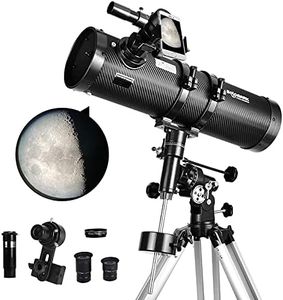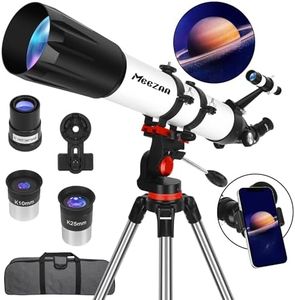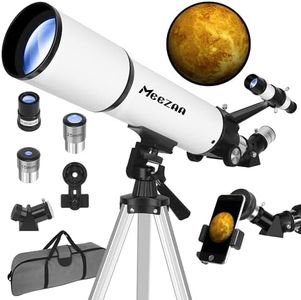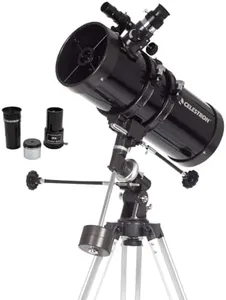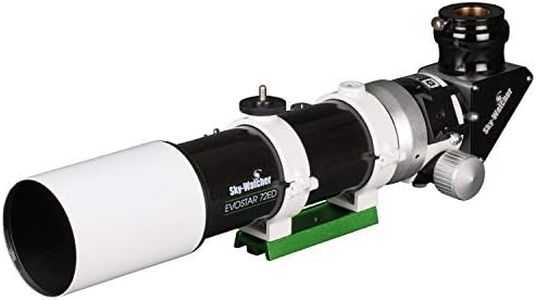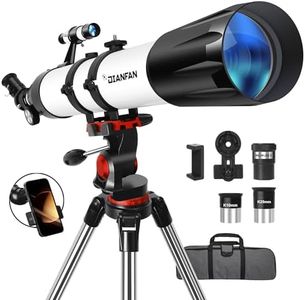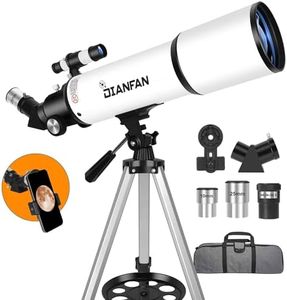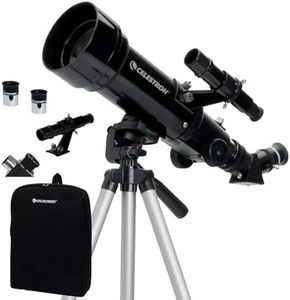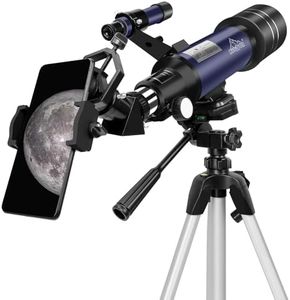We Use CookiesWe use cookies to enhance the security, performance,
functionality and for analytical and promotional activities. By continuing to browse this site you
are agreeing to our privacy policy
10 Best Telescopes For Adults Astronomy
From leading brands and best sellers available on the web.Buying Guide for the Best Telescopes For Adults Astronomy
Choosing a telescope for adult astronomy is all about matching your interests and experience level with the right type of equipment. Whether you want to observe distant planets, deep-sky objects like galaxies and nebulae, or just enjoy crisp views of the moon, there is a telescope that's well-suited for your needs. It's important to think about where you'll use the telescope, how portable you need it to be, and how much you want to learn about setting up and using optical equipment. Before you choose, consider how much time you're willing to invest in learning and maintaining your telescope, as well as the types of objects you most want to observe.Aperture SizeThe aperture size refers to the diameter of the main lens or mirror that gathers light in a telescope. This is a critical specification because the larger the aperture, the more light the telescope can collect, resulting in brighter and clearer images, especially of faint and distant objects. Aperture sizes can generally be divided into small (less than 100mm), medium (100-150mm), and large (over 150mm). Small apertures are fine for viewing the moon and planets, while medium and large apertures are better for seeing deep-sky objects like galaxies and nebulae. If you are mainly interested in casual viewing or you want a more portable telescope, a smaller to medium aperture might suit you. If you're keen on detailed astronomy and don't mind a heavier setup, a larger aperture is worth considering.
Focal LengthFocal length is the distance between the telescope's main optical element and the point where it brings light to a focus. This value affects the magnification and the field of view. Shorter focal lengths provide a wider view of the sky, making them ideal for large star fields and deep-sky viewing. Longer focal lengths offer higher magnification and narrower views, which are best for planets and lunar observation. Think about what you want to look at most—if you're more interested in seeing wide fields of stars or nebulae, a shorter focal length is great. For detailed views of planets, a longer focal length is preferable.
Mount TypeThe mount is the structure that supports your telescope and allows it to move. There are two main types: altazimuth (moves up-down and left-right) and equatorial (follows the rotation of the sky). Altazimuth mounts are simpler to use and good for beginners or casual users. Equatorial mounts are more complex but make it easier to track objects as they move across the sky, which is useful for longer viewing sessions or astrophotography. Your choice depends on how much effort you're willing to put into setup and tracking objects. If you prefer simplicity, choose an altazimuth mount; if you want to do astrophotography or track objects precisely, consider an equatorial mount.
Optical DesignTelescope optical design refers to the way the telescope forms images, with the main types being refractors, reflectors, and compound designs. Refractors use lenses, are low-maintenance, and offer sharp images but become expensive at larger sizes. Reflectors use mirrors, are generally more affordable at larger sizes, and are great for faint objects. Compound or catadioptric telescopes combine lenses and mirrors, offering versatility and compactness. Your choice depends on your observing priorities and how much maintenance you’re comfortable with—refractors require little upkeep, reflectors need occasional mirror alignment, and compound telescopes give a balance of features.
PortabilityPortability refers to how easy it is to move and set up your telescope. If you have to transport your telescope to a dark-sky site or don’t have much storage space, a more compact and lightweight model will be best. Larger, heavier telescopes may offer better performance but can be challenging to move and take longer to set up. Think about whether you'll be observing from your backyard or if you want to take your telescope to remote locations; your answer will guide you toward a model that fits your lifestyle.
Ease of UseEase of use is about how quickly and comfortably you can learn to operate your telescope. Features like simple alignment, clear instructions, computer-assisted controls, or even smartphone connectivity can make a big difference, especially for newcomers. If you're a beginner or want a hassle-free experience, look for telescopes praised for their straightforward setup and user-friendly features. If you're willing to learn and want to advance your skills, more advanced telescopes might be appropriate.

